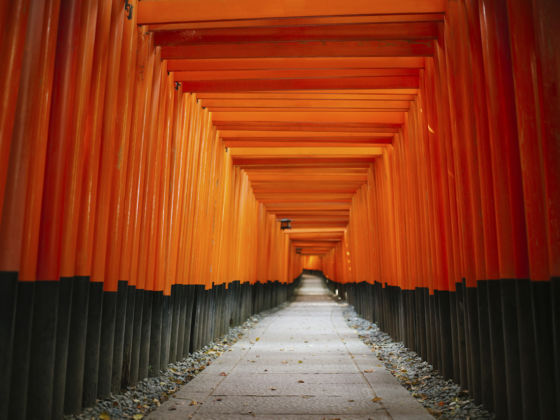When I first arrived in Japan, I was taken with the culture and traditions, the history, the Japanese attention to details, and the country’s love and connection to nature. I was enraptured by the juxtapositions: old and new, simple and advanced, chaotic and peaceful, traditional and modern. But I have been fortunate to stay in Japan long enough to see another side of the country: its incredible colors. Once I found my feet, I left the blue gleam of high-rises and began to look more closely at the red torii gates, famously pink cherry blossoms, towering green bamboo, and fiery red maple leaves. I was drawn in, one shade at a time.


Midori
The Japanese people’s reverence — even fear — of nature’s power is evident. Having experienced the might of tsunamis, typhoons, and earthquakes, they’re acutely aware of the might of Mother Nature.
The Japanese landscape is very diverse; from mountains in Hokkaido to towering bamboo forests and the tropics of the Okinawa Islands. 70 percent of Japan is covered in forests.
Ki-iro
Shrines are Shinto, temples are Buddhist, and they coexist perfectly in the country. Gold is a color that is prevalent in the rituals of both faiths. To me, it will always be the color of burning incense, melting candles, traditional robes, and the murmur of prayers.
Ao
Tokyo is full of sparkly clean skyscrapers that reflect the light during the day whether it’s cloudy or sunny. My photographs of the city always had a blue tone to them. When I finally left Tokyo, I discovered other shades of blue all over the country — not in shiny buildings but rather in the massive blue sky and aqua ocean, a shade I would’ve expected to see in Hawaii, not Japan.
Orenji
At night, the blues of the city dimmed and the orange of brake lights, neon signs, and paper lanterns come out. But orange is also the color of the sunrise. In Tokyo, a city thumping with people until the early morning hours, a quiet dawn is a gift not to be missed.
Aka
Upon my arrival, I was told that in the Japanese culture, red symbolizes happiness and joy. But my experience in the country has taught me that it is also the color of devotion — to people, tradition, and faith.
Pinku
Pink is the color of spring in Japan. Cherry blossom viewings are a spiritual time; it’s a time to reflect on your past year, to think about the year ahead, to remember friends and family who have passed or moved away, and to be grateful. This short season reminds us of how fleeting life is. When the blossoms are in full bloom, entire families go for hanami — a gathering under the pink flowers to reconnect with loved ones and enjoy the beautiful spectacle together.
Kasshoku
In Japan, the color brown is just as much the color of nature as green. It’s the color of tree trunks, deep roots, rich soil, foot-worn trails, and roads. It’s the color of the Ussuri brown bear, the Japanese hare, the Amami rabbit, the sika deer, and the famous Japanese macaque monkey. Brown reminds us of a time before plastic and concrete, when everything was made of wood: houses, temples, and bridges.




















